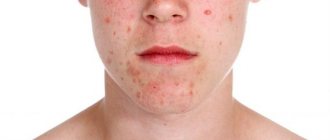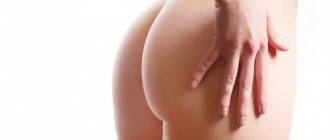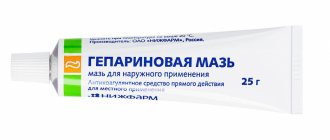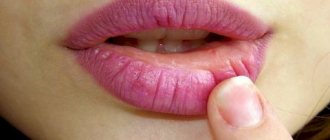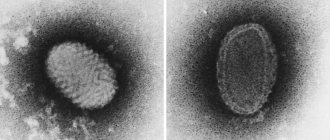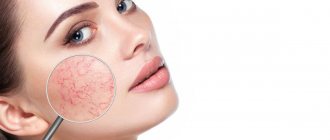From this article you will learn:
- keloid scar and hypertrophic scar - what is the difference,
- laser resurfacing of scars: before and after photos, video,
- what is the best ointment for scars?
A keloid scar is the result of excessive growth of scar tissue. It looks like a hard, smooth, tough, nodular growth, often in various shades of red. Many people mistakenly refer to it as “colloidal scar,” which is a grammatically incorrect name.
Keloid scars (keloids) can begin to form immediately after injury or several months later. They can be significantly larger than the original wound itself. Unlike other types of scars, this type of scars/scars never lighten or become invisible over time.
Keloid scar: photo
They occur on any part of the body where there has been damage to the skin, but the following parts of the body are most susceptible to the formation of keloids: chest, shoulders, neck, knees, ankles, earlobes.
What is a keloid scar (keloid)?
A scar is the formation of connective tissue at the site of trauma to the skin and deeper tissues. There are scars:
- normotrophic;
- atrophic;
- hypertrophic;
- keloid.
A normotrophic scar is a scar that is located at the skin level, small in size, often does not differ in color from the surrounding tissues, sometimes it can be lighter.
Atrophic scars are retracted, sinking against the background of surrounding tissues. They occur in places where the skin is thinnest - temples, forehead, back of the hand.
Hypertrophic scar - in the form of a roller rises above the skin, inflamed, mobile, painless. The skin pattern on the surface of this scar is smoothed.
A keloid scar is an abnormal type of scar that is characterized by excessive growth of immature connective tissue that extends significantly beyond the original wound. A similar scar appears several weeks, or even months after damage to the skin. Keloid scars quickly increase in size, almost never go away on their own, and cause a person various unpleasant sensations. There are favorite places for keloid scars - ears, neck, chest, shoulders, back.
During its active growth, the marginal zone of the scar is bright in color and forms outgrowths, capturing healthy areas of the skin. This feature distinguishes them from hypertrophic scars.
Previously, keloid was divided into true and false. It was believed that the true one arose spontaneously, that there was no objective reason for its occurrence. And the false one arose against the background of trauma. It has now been proven that there is a factor in the occurrence of true keloid - microtraumatization. Therefore, this division is very relative.
Complications
Keloid does not pose a danger to human health and life, but it can cause significant physical discomfort - itching, increased sensitivity around the scar. Some patients experience psychological discomfort due to the unaesthetic appearance of the scar if it is located in a visible place.
Complications of a keloid scar include the risk of developing systemic disorders due to connective tissue hypertrophy. Sometimes a keloid turns into contracture - a restriction of joint mobility due to cicatricial tightening of the skin.
People with scars on their lips, especially in the corners, often find it difficult to open their mouths, since this process is accompanied by painful sensations. Keloids formed after blepharoplasty can interfere with the movement of the eyelids and make it difficult to open the eyes.
Causes of keloid scars
The causes and mechanisms of the appearance of keloid scars are not fully known. There are factors that predispose to their occurrence. Conventionally, they can be divided into internal and external.
Internal factors:
- genetic predisposition (for example, increased levels of the enzyme that is responsible for collagen synthesis);
- deviations in the mechanism of normal wound healing;
- malfunction of the immune system (autoimmune reactions or decreased immunity);
- dark skin (more prone to keloid scar formation);
- endocrine diseases;
- excessive consumption of protein in food, etc.
External factors include any damage to the skin with or without a prolonged inflammatory reaction:
- acne on the body;
- lacerations;
- burns;
- tattoos;
- chicken pox and herpes zoster;
- piercing;
- mole removal;
- surgical interventions;
- abrasions and scratches;
- BCG vaccination.
What determines the risk of scarring?
The appearance of a scar and its nature depends on a number of factors:
- Depth and area of damage: if they are small, a scar may not appear at all.
- Tissue healing abilities.
- The presence of chronic diseases (for example, diabetes).
- Time for complete healing of the wound (it may increase if the wound has become infected).
The process of complete wound healing, which lasts for 21 days, ends with pathological scarring in only 33% of cases. If the process lasts more than 21 days, the probability increases to 78%.
Stages of scar development
Wound healing occurs gradually. Therefore, there are 4 stages of scar development:
- Epithelization stage (on days 7-10). During this period, the edges of the wound are pulled together by fragile granulation tissue. There is no scar as such yet.
- Stage of formation of a “young” scar (from 10 to 30 days). The blood supply to the injured area remains good. Collagen fibers begin to form in the granulation tissue.
- Stage of “mature” scar (30-90 days). The number of collagen fibers increases significantly, and therefore the scar becomes denser. Since the number of vessels is significantly reduced, it turns pale.
- The stage of formation of the scar itself (from 4 to 12 months). The scar becomes light and dense. Collagen fibers become along the lines of greatest tension. Already at the beginning of this period, it is possible to finally assess the condition of the scar and determine whether correction will be necessary.
This is how a normal scar develops. If at the third stage one or several unfavorable factors intervene, which were described above, then instead of a normotrophic scar, a keloid scar begins to form.
Collotherapy
Gel Collost is a high-tech biological material, namely collagen of the first type with a completely preserved structure. It is used to correct retracted (hypotrophic) scars. Immediately after administration, the drug creates the missing volume and also activates tissue regeneration in the affected area, triggering the formation of new collagen fibers and improving the quality of the newly formed tissue (greater order of the fibers, greater elasticity).
Scar correction with Collost usually allows you to achieve the desired effect immediately after the first procedure. The drug itself undergoes gradual resorption in tissues, but due to the stimulation of collagenogenesis, the injected collagen is gradually replaced by the body’s own collagen.
Symptoms of a keloid scar
At the beginning of the formation of a keloid scar, the symptoms are similar to those of a hypertrophic scar. But as the keloid develops, there is no longer any doubt about the diagnosis.
Keloid scars are characterized by the following symptoms:
- the surface is often shiny and smooth, but sometimes lobular and bumpy;
- rise significantly above the skin (more than 5 mm);
- very dense to the touch (reminiscent of rubber);
- the color and intensity of the color can be varied - from bright pink to bluish (the reason for this diversity lies in the number of blood vessels that supply the scar);
- the shape can be different, sometimes even bizarre (does not correspond to the tissue trauma that occurred). This is due to the growth of the keloid process along the skin stretch lines;
- the size is usually larger than the previous injury;
- the skin in the scar area is tense, small vessels may be dilated;
- almost everyone has itching in the scar area;
- many experience pain, numbness and increased sensitivity of the scar (even when touching clothing);
- do not disappear on their own over time;
- If removed surgically, there is a high probability that keloids will begin to appear again.
In addition, keloid scars that grow over large areas can limit movement. This is especially common after burns.
In the presence of such an aesthetic problem, complexes often form, and due to constant itching and discomfort, even psychological disorders.
Common places for scarring
Keloid scars form in the décolleté area, on the back, neck, face and earlobes . These areas contain a large number of testosterone receptors, which plays a significant role in the development of keloid. Most often, the formation of such scars is associated with some kind of cosmetic surgery.
For example, after blepharoplasty , a scar forms across the entire length of the upper eyelid and looks like a thin red stripe. If a keloid occurs, it can not only spoil the appearance, but also prevent the eye from closing.
After rhinoplasty - surgical intervention in the nose area - a scar forms near the nostrils, nasal septum, and also in the area of the upper lip.
Another popular operation is mole removal . In this case, a keloid forms if the wound becomes infected after the procedure, or an unhealed crust at the site of the mole is removed ahead of time.
In the décolleté area, keloid scars can appear after mammoplasty, and on the earlobes and other puncture sites - after piercing.
How to remove keloid scars using cosmetic procedures
At the ANACOSMA clinic, specialists have a non-surgical method for removing keloid scars. This is a combination of therapeutic treatment and cosmetic procedures.
First, the scar is transferred to a normotrophic state using injections of the drug Diprospan and a course of ozone therapy. After 3-6 months, if the condition of the scar is stable, laser resurfacing of the remainder is performed. This is the fastest, safest and most predictable way to deal with scars. The laser removes the upper layers of scar tissue and starts the skin regeneration process. As a result, the scar disappears, and young, normal skin appears in its place. To remove a scar, 1-3 procedures are required. An anesthetic cream is used for pain relief. The duration of the procedure is about 10 minutes.
After the procedure, redness and swelling persist for some time, and a crust forms at the site of the scar. This all goes away within a week. It is important not to remove or injure this crust yourself. If this happens, the procedure will be ineffective and the scar will remain.
After the procedure, it is important to avoid sunlight on the scar area - pigmentation may form. That is why laser resurfacing is recommended to be carried out in the autumn-winter period.
It is important to remember that without preliminary preparation, laser resurfacing of a keloid scar is absolutely impossible, as this can provoke uncontrolled growth of the scar.
General contraindications to laser resurfacing:
- oncological diseases;
- pregnancy and lactation;
- taking antibiotics, hormonal and diuretic drugs, NSAIDs;
- sunbathing a month before the procedure;
- acute infectious diseases one month before the procedure;
- operations within a month before the procedure;
- skin damage at the procedure sites.
What if a scar appears?
Once scar tissue has formed, unfortunately, it will not be possible to completely get rid of it. All medical actions in this case will be aimed at minimizing the manifestations of the scar. The following methods are used to treat formed keloids:
- GCS injections are a popular and effective method for treating keloid and hypertrophic scars. A GCS solution is injected into the scar tissue 1–2 times a month until the expected results appear. Unfortunately, with excessive use of the drug, skin atrophy may develop at the injection site, telangiectasia or an atrophic scar may appear. [4]
- Surgical excision of the scar - you should not resort to this method as the only remedy, since it always ends in a relapse that exceeds the existing scar in area. This method can be resorted to after previous long-term therapy carried out in various ways. [4]
- Cryotherapy is the treatment of scars with liquid nitrogen. There are various methods of its use: spray, contact method and intralesional cryoprobe. The latter method is more effective. In addition, the combination of cryotherapy with GCS injections gives the best result compared to others. [4]
- Laser treatment – various lasers are used. Nd:YAG laser with a wavelength of 1,064 nm is used to target the vessels of scar tissue. In addition, CO2 and Er:YAG lasers are actively used in fractional mode. But it is not recommended to use ablative lasers (CO2 and Er:YAG) as the only treatment method, since in this case there is a high probability of relapse. [5]
A dye laser (PDL) with a wavelength of 585 nm is also considered effective. [6]
There is evidence of the effective use of CO2 laser in fractional mode during surgery to improve the cosmetic outcome of healing. [7]
- Ointment with 5-fluorouracil for the treatment of scars, but it is not sold in Russia. [4]
- Botulinum toxin type A is used to weaken the tension of the wound edges by reducing muscle activity. Injections are given immediately after surgery. [8]
- Imiquimod cream is recommended for use after surgical excision of a scar to minimize the likelihood of recurrence. [9]
- Other methods - bleomycin, verapamil, TGF-β, interferon, tacrolimus, sirolimus, tamoxifen, epidermal growth factor, retinoic acid, tamoxifen and other drugs are also considered effective for the treatment of scars. [10]
How to remove keloids surgically
Surgical removal of keloid scars is not often used. Because this is a serious trauma to the scar and most often a relapse occurs later. Excision is performed mainly for rough scars and when it is necessary to remove the width of the scar. This can be done in two ways:
- using a classic scalpel;
- laser removal using a laser scalpel.
The scalpel laser in the treatment of keloid scars is more traumatic. Therefore, it is not recommended in the treatment of this pathology.
The essence of the method is not only to remove the scar, but also to create favorable conditions for wound healing using other methods of prevention and treatment of pathological scars, both before and after surgical treatment.
Still have questions?
If you have any questions or sign up for a free consultation with a surgeon, please call:
+7 (495) 255−50−11.
| Consultation with a dermato-oncologist surgeon | FOR FREE |
| Excision of scars (per 1 cm incision): | |
| Excision of scars on the body, 1 cm of scar | 3,000 rub. |
| Excision of scars on the face and neck, 1 cm of scar | 5,000 rub. |
| Correction of body scar with local tissues, 1 cm of scar | 5,000 rub. |
| Correction of face and neck scars with local tissues, 1 cm of scar | 10,000 rub. |
| Correction of retracted scars with Collost filler 7% - 1.5 ml | 13,000 rub. |
| Correction of retracted scars with Collost filler 15% - 1.5 ml | 18,000 rub. |
| Spherogel Lights 0.5 ml | 6,000 rub. |
| Spherogel Lights 1.0 ml | 11,000 rub. |
| Spherogel Medium 0.5 ml | 8,000 rub. |
| Spherogel Medium 1.0 ml | 15,000 rub. |
| Scar hormone therapy (Diprospan) | 1,300 rub. |
| Laser resurfacing CO2 1 cm2 | 2,000 rub. |
| Biopolymer removal | 40,000 rub. |
How to remove keloid scars at home
You can find a lot of information on the Internet about how to get rid of keloid scars without doctor intervention. Here are the most popular methods:
- regular use of moisturizing creams;
- cream with onion extract for healing scars;
- lemon juice to lighten scars;
- compresses with castor oil;
- applying aloe;
- compresses with green tea;
- rubbing in liquid vitamin E and D;
- lavender oil;
- a mixture of St. John's wort and castor oil;
- Apple vinegar;
- manuka honey;
- Arnebia grass.
There are many more traditional ways to remove scars than those listed. But their effectiveness has not been proven. The body may react negatively to such methods, such as an allergic reaction. Moreover, trying to remove the keloid can make the situation worse. After all, keloid scars form even after trauma at the microscopic level.
Treatment of keloid scars is a complex problem that requires an integrated approach. Therefore, you need to contact proven specialists who use reliable techniques.
Preventative measures against scar formation
Properly selected external care has a great influence on the formation of scar tissue and its further regeneration. Strict adherence to hygiene rules makes it possible to prevent the appearance of scars. Experts recommend the following steps to help reduce the risk of keloid formation after piercing.
So, what should you do after getting your ears pierced ?
- Under no circumstances should you immediately put on gold or silver earrings, they can provoke an inflammatory process. It is necessary to use earrings made of a special hypoallergenic alloy.
- It is very important to regularly clean the puncture site - treat it with antiseptics (chlorhexidine, miramistin), and then use panthenol-based healing agents.
- To prevent the formation of scars, you can use silicone-based gels for the first month - only after consultation with your doctor.
Visual inspection must be carried out regularly. Note any abnormal healing. Redness, soreness, swelling or lumps are a reason to make an appointment with a specialist. A keloid noticed in time is 90% successful for treatment!
